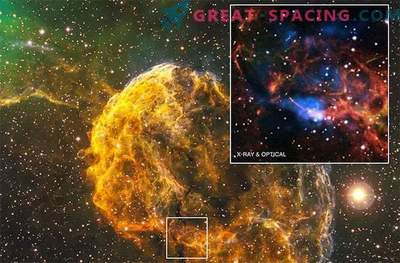
A team of scientists was able to fix the synchronous switching of X-ray and radio modes between radio-bright and radio-silent states in the pulsar PSR B0823 + 26. This is the second time a similar event is observed in a pulsar.
Previously, synchronous switching between modes was identified only in one old and almost equalized pulsar PSR B0943 + 10. So scientists are interested in finding similar behavior in other objects in order to improve knowledge of the mechanisms of this activity. A new study from the University of Amsterdam in the Netherlands presented another example of such a pulsar. The discovery made thanks to observations in the spacecraft XMM-Newton from ESA, the giant radio telescope GMRT (India) and the international station LOFAR.

April 20, 2017 The GMRT observed a pulsar PSR B0823 + 26 at a frequency of 325 MHz. The survey showed a typical example of a pulsar in the B mode for 2500 single-pulse sequences or 7.5 hours in the B mode. On the left, the average energy per pulse in arbitrary units
The switching of modes in PSR B0823 + 26 was observed for approximately 39 hours simultaneously in X-rays and in the radio band, in order to detect synchronous correlated switching of X-ray and radio modes. PSR B0823 + 26 is 1,000 light-years distant from us. It is considered one of the brightest radio pulsars in the northern sky. Its period is 530 milliseconds, the age of rotation is 4.9 million years, and the estimated magnetic field is 980 billion G. Observations opened the switch between radio-bright (B) mode and radio-quiet (Q). In addition, it was revealed that Mode B was observed in 5 of 6 XMM-Newton reviews, and Q is one. This is an amazing result, because PSR B0943 + 10 demonstrates anti-correlated mode switching.
Scientists are also trying to understand the nature of the observed synchronous mode switching in PSR B0823 + 26. It is now believed that the behavior is associated with a change in the accretion rate of material from the interstellar medium through which it passes. It is possible that we are not observing a true change in the regime, but register the sudden appearance of powerful bursts, the intensity of which corresponds to the fractal distribution over a wide range of time scales. That is, PSR B0823 + 26 is an example of an accreting material from a debris disk or interstellar medium, which will explain some characteristics of its X-ray radiation.











































